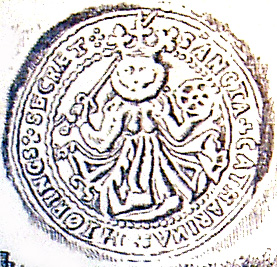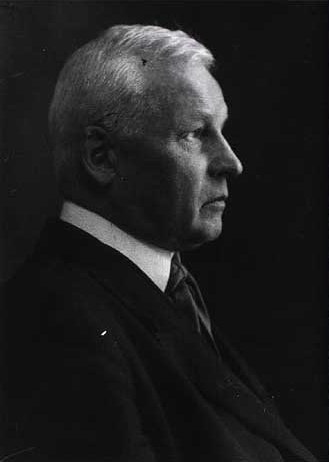|
Aalbæk Station
Aalbæk railway station is a railway station serving the small coastal town of Aalbæk in Vendsyssel, Denmark. The station is located on the Skagensbanen railway line from Skagen to Frederikshavn between Bunken and Napstjært halts. The train services are currently operated by Nordjyske Jernbaner which run frequent local train services between Skagen station and Frederikshavn station. History The station opened in 1890 when the railway started. In 1915, the Danish Parliament agreed to build a new railway line between Aalbæk and Hjørring, but it was only the first part between Hjørring and Vellingshøj stations that was built. Instead, that railway was extended to Hirtshals and this is today the Hirtshalsbanen railway line. The station building was built in 1932–33. It was the last drawn by the architect Ulrik Plesner before his death. Operations The train services are currently operated by the railway company Nordjyske Jernbaner (NJ) which run frequent local train ... [...More Info...] [...Related Items...] OR: [Wikipedia] [Google] [Baidu] |
Railway Station
Rail transport (also known as train transport) is a means of transport that transfers passengers and goods on wheeled vehicles running on rails, which are incorporated in tracks. In contrast to road transport, where the vehicles run on a prepared flat surface, rail vehicles (rolling stock) are directionally guided by the tracks on which they run. Tracks usually consist of steel rails, installed on sleepers (ties) set in ballast, on which the rolling stock, usually fitted with metal wheels, moves. Other variations are also possible, such as "slab track", in which the rails are fastened to a concrete foundation resting on a prepared subsurface. Rolling stock in a rail transport system generally encounters lower frictional resistance than rubber-tyred road vehicles, so passenger and freight cars (carriages and wagons) can be coupled into longer trains. The operation is carried out by a railway company, providing transport between train stations or freight customer facilit ... [...More Info...] [...Related Items...] OR: [Wikipedia] [Google] [Baidu] |
Hjørring
Hjørring () is a town on the island of Vendsyssel-Thy at the top of the Jutland peninsula in northern Denmark. It is the main town and the administrative seat of Hjørring Municipality in the North Jutland Region. The population is 25,644 (according to an official census carried on 1 January 2022).BY3: Population 1. January by urban areas, area and population density The Mobile Statbank from It is also one of Denmark's oldest towns, having celebrated its 750th anniversary as a market town in 1993. Hjørring is centrally located in a sparsely populated area and serves as an urban center for large parts of especially the western and centr ... [...More Info...] [...Related Items...] OR: [Wikipedia] [Google] [Baidu] |
Railway Stations Opened In 1890
Rail transport (also known as train transport) is a means of transport that transfers passengers and goods on wheeled vehicles running on rails, which are incorporated in tracks. In contrast to road transport, where the vehicles run on a prepared flat surface, rail vehicles (rolling stock) are directionally guided by the tracks on which they run. Tracks usually consist of steel rails, installed on sleepers (ties) set in ballast, on which the rolling stock, usually fitted with metal wheels, moves. Other variations are also possible, such as "slab track", in which the rails are fastened to a concrete foundation resting on a prepared subsurface. Rolling stock in a rail transport system generally encounters lower frictional resistance than rubber-tyred road vehicles, so passenger and freight cars (carriages and wagons) can be coupled into longer trains. The operation is carried out by a railway company, providing transport between train stations or freight customer faciliti ... [...More Info...] [...Related Items...] OR: [Wikipedia] [Google] [Baidu] |
Railway Stations In The North Jutland Region
Rail transport (also known as train transport) is a means of transport that transfers passengers and goods on wheeled vehicles running on rails, which are incorporated in tracks. In contrast to road transport, where the vehicles run on a prepared flat surface, rail vehicles (rolling stock) are directionally guided by the tracks on which they run. Tracks usually consist of steel rails, installed on sleepers (ties) set in ballast, on which the rolling stock, usually fitted with metal wheels, moves. Other variations are also possible, such as "slab track", in which the rails are fastened to a concrete foundation resting on a prepared subsurface. Rolling stock in a rail transport system generally encounters lower frictional resistance than rubber-tyred road vehicles, so passenger and freight cars (carriages and wagons) can be coupled into longer trains. The operation is carried out by a railway company, providing transport between train stations or freight customer faciliti ... [...More Info...] [...Related Items...] OR: [Wikipedia] [Google] [Baidu] |
Jutland
Jutland ( da, Jylland ; german: Jütland ; ang, Ēota land ), known anciently as the Cimbric or Cimbrian Peninsula ( la, Cimbricus Chersonesus; da, den Kimbriske Halvø, links=no or ; german: Kimbrische Halbinsel, links=no), is a peninsula of Northern Europe that forms the continental portion of Denmark and part of northern Germany. The names are derived from the Jutes and the Cimbri, respectively. As with the rest of Denmark, Jutland's terrain is flat, with a slightly elevated ridge down the central parts and relatively hilly terrains in the east. West Jutland is characterised by open lands, heaths, plains, and peat bogs, while East Jutland is more fertile with lakes and lush forests. Southwest Jutland is characterised by the Wadden Sea, a large unique international coastal region stretching through Denmark, Germany, and the Netherlands. Geography Jutland is a peninsula bounded by the North Sea to the west, the Skagerrak to the north, the Kattegat and Baltic Sea to the ... [...More Info...] [...Related Items...] OR: [Wikipedia] [Google] [Baidu] |
North Jutland Region
The North Jutland Region ( da, Region Nordjylland), or in some official sources, the North Denmark Region, is an administrative region of Denmark established on 1 January 2007 as part of the 2007 Danish municipal reform, which abolished the traditional counties () and set up five larger regions. At the same time, smaller municipalities were merged into larger units, cutting the number of municipalities from 271 before 1 January 2006, when Ærø Municipality was created, to 98. North Jutland Region has 11 municipalities. The reform diminished the power of the regional level dramatically in favor of the local level and the central government in Copenhagen. Geography The North Jutland Region consists of the former North Jutland County combined with parts of the former Viborg County (the former municipalities of Aalestrup, Hanstholm, Morsø, Sydthy, and Thisted), and the western half of Mariager Municipality (in the former Aarhus County). Geologically, the region lies in the nor ... [...More Info...] [...Related Items...] OR: [Wikipedia] [Google] [Baidu] |
Hellerup
Hellerup () is a very affluent district of Gentofte Municipality in the suburbs of Copenhagen, Denmark. The most urban part of the district is centred on Strandvejen and is bordered by Østerbro to the south and the Øresund to the east. It comprises Tuborg Havn, the redeveloped brewery site of Tuborg Breweries, with the Waterfront Shopping Center, a marina and the headquarters of several large companies. Other parts of the district consist of single family detached homes. Local landmarks include the science centre Experimentarium and the art Øregaard Museum. Geography With an area of approximately 515 hectares, Hellerup covers 20% of the municipality. The district is bounded by the municipal border with Copenhagen (Østerbro) to the south, the Øresund to the east, Charlottenlund Forrest to the north, Lyngbyvej to the southwest and Niels Andersens Vej/Eivindsvej to the northwest. As of a January 2012, Hellerup had a population of 18,781, equaling 25% of the municipal populatio ... [...More Info...] [...Related Items...] OR: [Wikipedia] [Google] [Baidu] |
Dansk Jernbane-Klub
Danish may refer to: * Something of, from, or related to the country of Denmark People * A national or citizen of Denmark, also called a "Dane," see Demographics of Denmark * Culture of Denmark * Danish people or Danes, people with a Danish ancestral or ethnic identity * A member of the Danes, a Germanic tribe * Danish (name), a male given name and surname Language * Danish language, a North Germanic language used mostly in Denmark and Northern Germany * Danish tongue or Old Norse, the parent language of all North Germanic languages Food * Danish cuisine * Danish pastry, often simply called a "Danish" See also * Dane (other) * * Gdańsk * List of Danes * Languages of Denmark The Kingdom of Denmark has only one official language, Danish, the national language of the Danish people, but there are several minority languages spoken, namely Faroese, German, and Greenlandic. A large majority (about 86%) of Danes also s ... {{disambiguation Language and nation ... [...More Info...] [...Related Items...] OR: [Wikipedia] [Google] [Baidu] |
Copenhagen
Copenhagen ( or .; da, København ) is the capital and most populous city of Denmark, with a proper population of around 815.000 in the last quarter of 2022; and some 1.370,000 in the urban area; and the wider Copenhagen metropolitan area has 2,057,142 people. Copenhagen is on the islands of Zealand and Amager, separated from Malmö, Sweden, by the Øresund strait. The Øresund Bridge connects the two cities by rail and road. Originally a Viking fishing village established in the 10th century in the vicinity of what is now Gammel Strand, Copenhagen became the capital of Denmark in the early 15th century. Beginning in the 17th century, it consolidated its position as a regional centre of power with its institutions, defences, and armed forces. During the Renaissance the city served as the de facto capital of the Kalmar Union, being the seat of monarchy, governing the majority of the present day Nordic region in a personal union with Sweden and Norway ruled by the Danis ... [...More Info...] [...Related Items...] OR: [Wikipedia] [Google] [Baidu] |
Ulrik Adolph Plesner
Ulrik Adolph Plesner, usually known as Ulrik Plesner (17 May 1861 in Vedersø – 22 November 1933 in Skagen) was an innovative Danish architect who designed in a National Romantic style at the beginning of the 20th century. He is remembered in particular for his influence on the style of architecture practiced in Skagen in the north of Jutland."Ulrik Plesner, f. 1861" ''Dansk Biografisk Leksikon''. Retrieved 12 October 2013. Early life Born in Vedersø near on the west coast of Jutland, he was the son of parish priest J.F. Plesner. After attending the Copenhagen Technical School (''Teknisk Selskabs Skole''), he ...[...More Info...] [...Related Items...] OR: [Wikipedia] [Google] [Baidu] |
Hirtshalsbanen
The Hirtshals railway line ( da, Hirtshalsbanen) is a long standard gauge single track railway line between Hjørring and Hirtshals, Denmark. The railway links the fishing and ferry port of Hirtshals with the Danish rail network. The railway line opened in 1925. It is currently owned and operated by the railway company Nordjyske Jernbaner (NJ) which runs frequent local train services from Hirtshals station to Hjørring station with onward connections from Hjørring to the rest of Denmark. History In 1915, the Danish Parliament agreed to build a new railway line between and on the Skagen Line with a possible branch line from to . The main line to Aalbæk was never constructed however, but the branch line to Hirtshals was built instead. Construction started in April 1924, and the railway was opened on 18 December the following year. From the start, the railway line was operated together with the Hjørring-Løkken-Aabybro Line and the Hjørring-Hørby Line in the joint o ... [...More Info...] [...Related Items...] OR: [Wikipedia] [Google] [Baidu] |






